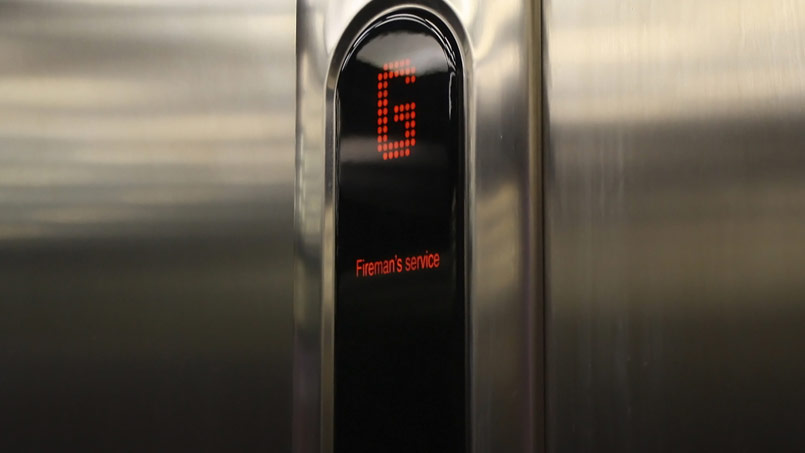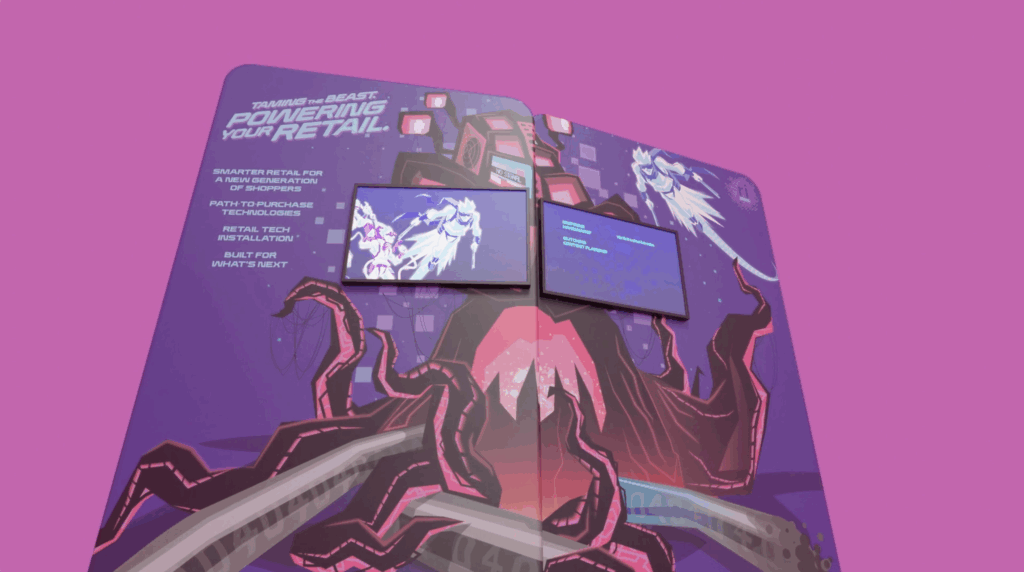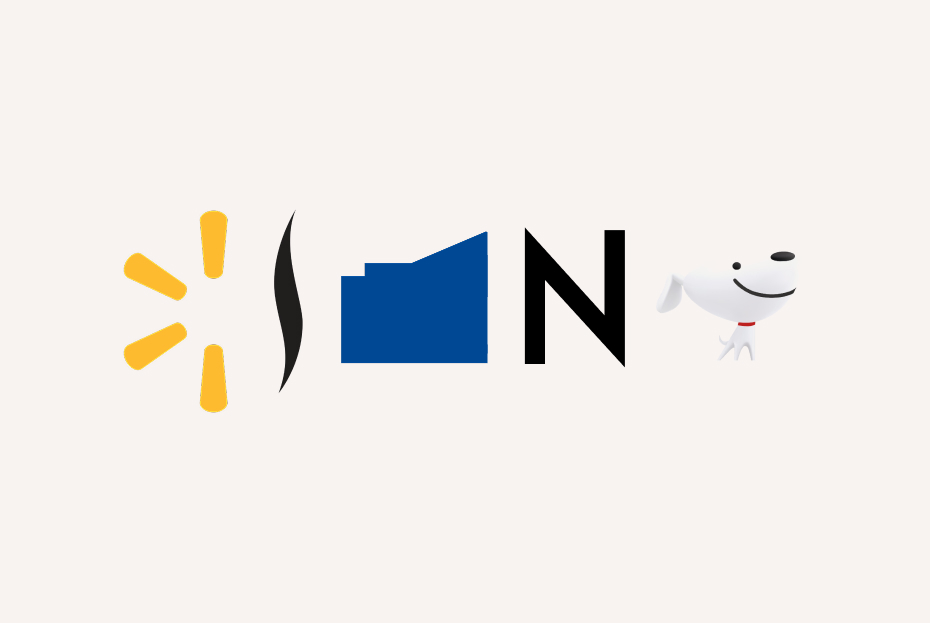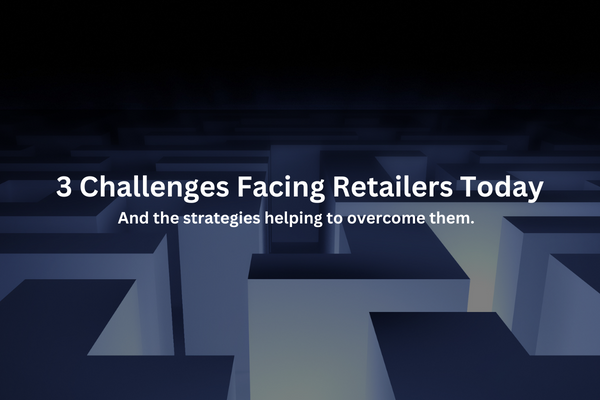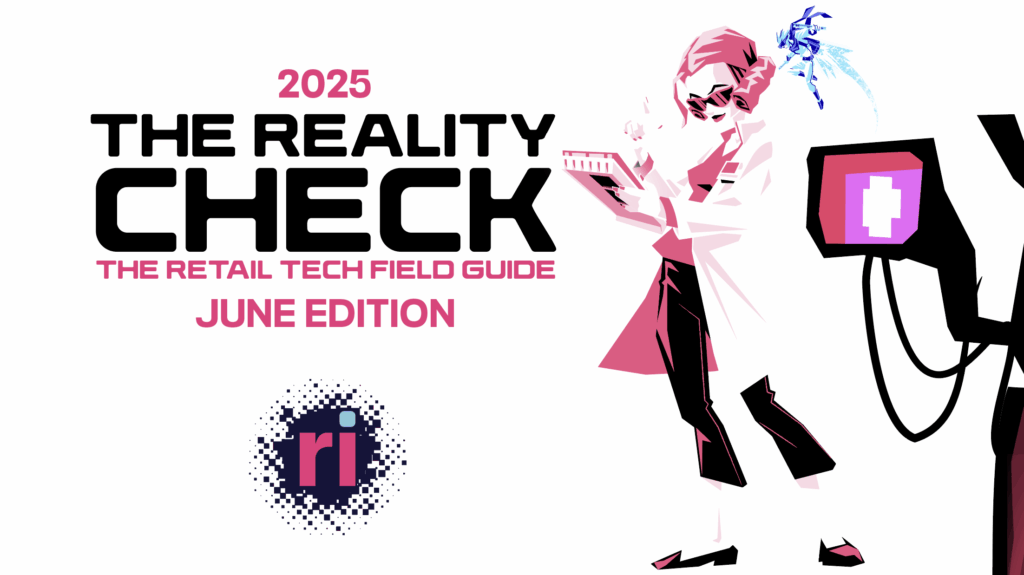Think Your Retail Space is Too Small for Digital Signage? Try Designing for an Elevator!
During his seminar at the 2014 Digital Signage Expo, Creative Director, Doug Hampton-Dowson was asked an interesting question. How do the principles we applied in executing the retail design of the Time Warner Cable Flagship store project apply to an elevator?
How is an Elevator Like a Retail Store?
Digital signage in an elevator is most commonly associated with the video that went viral of the prank where elevator passengers were tricked into thinking the floor below them dropped out. This is a good example of using digital to create an interactive experience, but it may not be the sort of experience you want associated with your brand.
While a retail store and an elevator may seem unrelated, they do have a lot in common. Before Time Warner Cable started rolling out their Experience Stores, the physical locations were centers for people to wait in line to pay their bill or exchange a piece of hardware that wasn’t working properly. Elevators are also a place where people have to wait, often times longer than they would like. In both instances, traditionally, there isn’t anything for people to do to pass the time while they wait.
People who are in an elevator, like people who are waiting in line, are goal oriented. They need to get to their floor; to continue onto their destination. They don’t want to be distracted in a way that would make them miss their floor, the same way that customers don’t want to get out of line to check out a display because they don’t want to lose their spot in line.
Understanding Your Customer
The first step to planning your interactive environment is understanding your customer. Consider the following:
What are your customers there for?
Customers don’t just appear. They have goals. It may be to purchase or just explore. In an elevator it may just be to get from one floor to another.
A challenge is that people simply aren’t prepared to interact on an elevator. In the retail environment, people may not want to interact with salespeople prior to making a purchase, but they go into a store knowing that they will likely be greeted and offered assistance. In an elevator people generally face forward and don’t speak to anyone they don’t know. There is nowhere to sit, and the sooner the ride is over the better. This is problematic if your goal is to create a memorable experience.
What are your specific customer characteristics?
Consider the mood your customers are in, An elevator for a mall will have customers in a different mood than that of a museum or of an office building. Mall passengers may appreciate a digital ad informing them about a sale, while museum passengers may be interested in an exhibit they didn’t know about, and office building passengers may not be in the mood to interact at all.
How do customers behave during their visit and how long do they visit? A regular speed elevator will give you more time to interact than a high speed elevator will. Additionally a high traffic elevator in a building with many floors will have some passengers on it for much longer than a low traffic elevator with just a few floors.Sometimes an elevator trip may be as short as one floor up or down. This does not give you a lot of time to interact with the passengers.
Also consider the demographics of your customers. Who is riding the elevator and what will appeal to that audience? For example if the majority of the morning audience is senior citizens, that’s not a time to promote content for the teenage audience who won’t be likely to ride the elevator until the afternoon.
What’s your customer engagement strategy?
What role will the interactive play? Active or passive? An active strategy would include a call to action for the elevator passengers where a passive one may just include music and images to make their ride more pleasant.
Planning the Environment
The next step in successful interactive environmental planning is the actual physical environment itself.
The space in an elevator is small to begin with, but then you have to consider how many people are in it on average at a given time. If you put visual content in the front, can it be seen by people in the back?
Will the size of your display make people need to backup to be able to see everything. If there are passengers behind them this could be problematic.
The Placement
First identify your engagement zones. In an elevator people are used to walking in and have buttons front facing to one of their sides that they have to push. If you put a display behind them in an elevator, people may not be comfortable engaging with it.
Next think about the specific placement considerations. Is your display somewhere passengers will see it? Is it placed where passengers will block each others’ views? Also avoid placing it in a way where passengers may crowd in one area or block the traffic flow coming on and off of the elevator.
Content
Once you’ve taken everything else into consideration, you will need to figure out what content will be on the screen. Just like retail customers, elevator passengers don’t care about how well you crafted your content. They will only pay attention if what is on the screen is relevant and they can relate to it. Consider the following:
What’s on-screen?
Is it relevant? Is it entertaining? Will the passengers want it?
Who’s producing it?
A brand, an agency? Can you reuse it? How often will it change?
How retail-rugged is it?
Can you avoid blank screens?
What content would elevator passengers find useful? If the elevator is in a large office building or mall, maybe a touch screen digital map which would help them to find their way once they got to their floor. If the elevator is in a hotel or convention center during an event, maybe a show schedule that could be updated every day.
Photo credit: Wikipedia.org
